Today I’m putting on my social scientist hat to describe and explain a very common French ritual that took me some time to learn, and even more time to get used to.
The apéro comes from the word apératif. In a restaurant, the first thing you will be asked if you are out with a group for dinner (especially if it looks like a celebration) is whether you want to order an aperatif: something to drink before you order. I suppose the equivalent in the US would be “Can I get some drinks started for you while you look at the menu?” The aperatif is meant to “open the appetite” – the word comes from Latin and today modern Italian, aprire, to open.
The apéro is the casual version of the apératif, something you do at home with friends or family, not in a restaurant. But it is definitely a ritual. I call it a ritual in the sense a cultural practice with a set of rules, that is performed on certain occasions. From my participant observation-based study of this French ritual 😊, there are times when it is required, and other times when it’s optional.
The apéro is definitely required when you have invited guests for lunch or dinner. It takes place before the meal, before everyone passes “à table,” and it opens the conversation that will continue during the meal. Depending on the arrival times of the guests (some of whom will almost certainly be late), it can last anywhere from 45 minutes to several hours.
The apéro is optional when you are eating with your immediate family, and usually reserved for special or semi-special occasions. It is definitely expected before holiday meals: Christmas, New Year’s, Easter, a family birthday or wedding anniversary, and so on. Often families will have the apéro before the first meal together after some time apart, as in when Christian and I arrive at his parents’ house every two or three weeks to spend the weekend. In some families the apéro might happen every evening before dinner, but in my experience this is rare.
The apéro almost always takes place in the living room, though occasionally I have experienced it with people standing in the kitchen while the meal is being prepared. Guests are invited into the living room as they arrive, taking their seats on chairs and couches that have been arranged around a coffee table, hopefully a large one. The host arranges the necessities on the coffee table: glasses, the beverages that will be offered, and snacks, usually in decorative bowls or nice plates.
Drinks will be served and the apéro ceremony will begin when all the guests have arrived, unless someone has called and said that they will be more than 30 minutes late. In that case, it’s acceptable to start (but not to finish) without them.
The host opens the apéro by asking each guest what they would like to drink. White wine is almost always offered as one of the choices, with or without a syrup like cassis or peach. White wine with a syrup is called a “kir,” and champagne with syrup is a “kir royale.” The image below is a white wine apéro served at a friend’s house.
Several options from the apératif category are also offered: in my family, these include Pastis (an anise flavored liqueur), Suze (made from gentian root, bright yellow and quite bitter), homemade vin de noix (walnut wine), and Martini (white vermouth).
The host is also free to offer other things as they wish: beer, whisky, or a cocktail, although cocktails are still not very commonly served at home in France. I do like to serve an Aperol spritz in the summer though.
Champagne is offered on birthdays, anniversaries and holidays, but also sometimes if you particularly like your guests and want to offer them something special. Here is Christian serving champagne for the Christmas Eve apéro:
Non-alcoholic offerings must also be offered, for the children or teenagers present and for anyone else who chooses them. These can include fruit juices, colas or other sodas, and the ubiquitous “sirops” – thick, sweet, concentrates in flavors like raspberry, mint, or cassis that are mixed with sparkling water to make a pleasant drink.
Everyone who is present, including children, is served a drink before the toasting can begin. Everyone toasts individually with everyone else, looking into each others’ eyes and saying “Santé!” Crossing glasses must be avoided. Once this is done, everyone takes a sip. At this point, the host picks up the first bowl or plate of snacks and offers them around the circle to each person in turn, serving themselves last. The host will continue to make the rounds, offering snacks every few minutes for the duration of the apéro.
The snacks are obligatory – the French almost never drink alcohol without eating something to go with it. If you order a glass of wine at a sidewalk café, you will also be served a small bowl of nuts or chips or olives to go with it. Basic snacks for the apéro include a wide range of special crackers that are made for this purpose (and conveniently located next to the aperatifs in the grocery store), nuts, olives, and/or potato chips. Never cheese. In the US, we often do a less formal version of the apéro in the kitchen with guests before dinner, but here the choices are mostly wine or beer, and the snacks almost always include some form of cheese and crackers. In France, cheese comes at the end of the meal, just before dessert.
If your host wants to impress, there may be more elaborate amuses-bouches (literally things to amuse your mouth) or hors d’oeuvres served with the apéro: verrines (small glasses with layers that are eaten with a spoon); rounds of toast or blinis with foie gras, smoked salmon, or other savory delights; or petit fours, which are not desserts in France but literally “little ovens,” small morsels of puff pastry filled with cheese and spinach, hotdog pieces and mustard, goat cheese and fig jam, and so on.
If you are having lunch or dinner afterwards, the apéro ends after everyone has finished their drink and most of the prepared snacks have been eaten. This would happen quickly in the US, but in France it takes 45 minutes to an hour and a half. You can also invite people just for the apéro, without a meal: in this case, guests are offered a second drink, snacks bowls or plates are refilled, and the apéro lasts two hours or more.
Most confusing for me is the “apéro dinatoire,” or apéro dinner. If someone invites you to an apéro dinatoire, it means that you will be eating something more substantial than snacks or hors d’oeuvres. They are inviting you to a casual dinner: most likely served in the living room around the coffee table. You will start with the regular apéro, i.e. snacks, but it will be followed by courses that more or less resemble appetizers, main dishes, and dessert. You can ask everyone to bring something and have a group of friends over for an apéro dinatoire. Each person has a small plate and will serve themselves what they want. Quiches are very popular, as are cakes – which in French are always savory, not sweet. (I will have to write a whole post on these “cakes” soon). The photo below is from a potluck apéro dinatoire that Christian and I were invited to in December. This stage is the main course, which features a quiche (the first one I’ve ever made) and a cake with ham and green olives.
Every once in a while, someone surprises you with an apéro dinatoire. You have been invited for the apéro at 6 or 7 pm, and you may have plans for dinner later, either at a restaurant or something that you have already started making at home. But no: it’s a surprise apéro dinatoire, and you pretty much have to stay since your host has already prepared a full meal. I asked Christian once how you know in advance whether it’s an apéro or an apéro dinatoire, and he said that there is no way to know: you just have to be flexible and prepared for either.
In an assignment for one of my geography classes, I ask my students to identify an everyday phenomenon that is ubiquitous in our culture, something that we take for granted and don’t think about, but that doesn’t exist in other cultures. The American lawn is a great example: almost every house has one, and there are historical, socio-economic, and cultural explanations for that – but it’s rare in other countries.
Because I gradually slipped into French culture, spending more and more time in France over a ten-year period and eventually integrating into a family, I didn’t think about the apéro in these terms until recently. When Christian was with me for a semester with students in Cannes in the fall of 2021, the first thing he wanted to do to welcome them was invite them all to our apartment for the apéro. They enjoyed it (except for the sample of pastis, which all but one student dumped into the kitchen sink), but we had to explain everything written above: none of them had experienced anything like it before.
The apéro is not unique to France – Italy has the apérativo which is similar, Spain has tapas, and other countries probably have something like this as well. But the apéro ritual does say something interesting about French hospitality and the way that alcohol is consumed in France – a topic that will be addressed in a later essay.






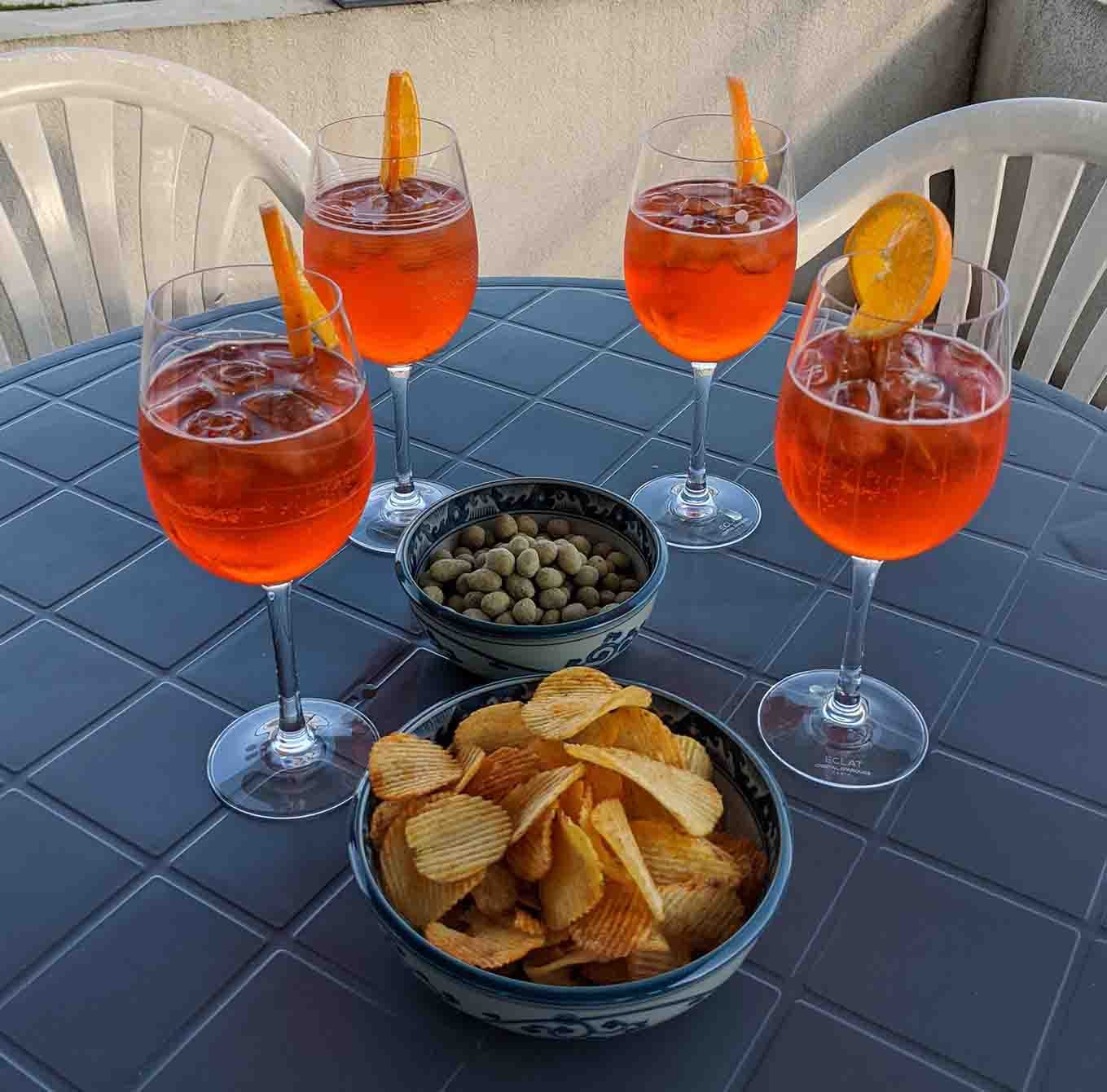
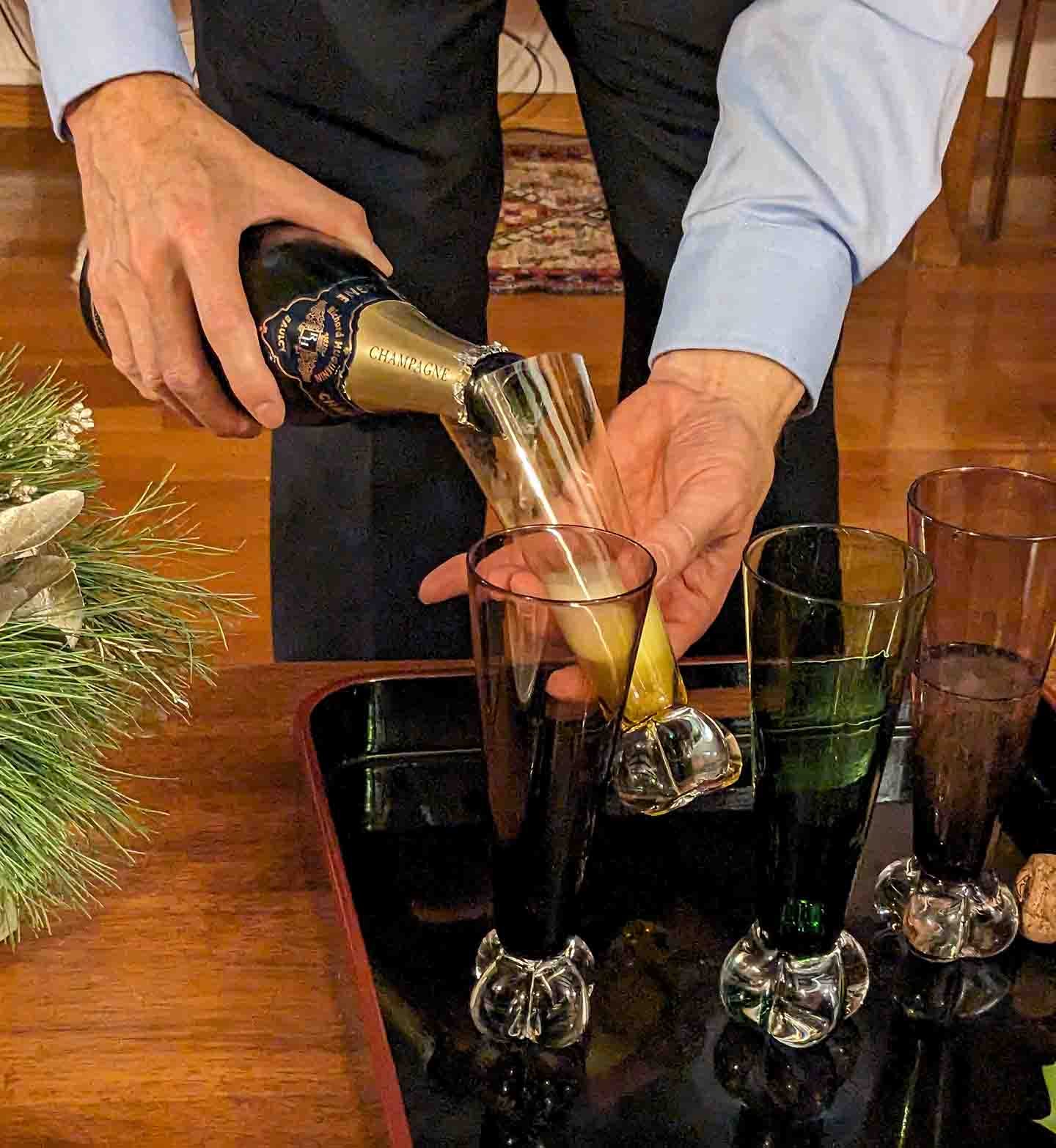
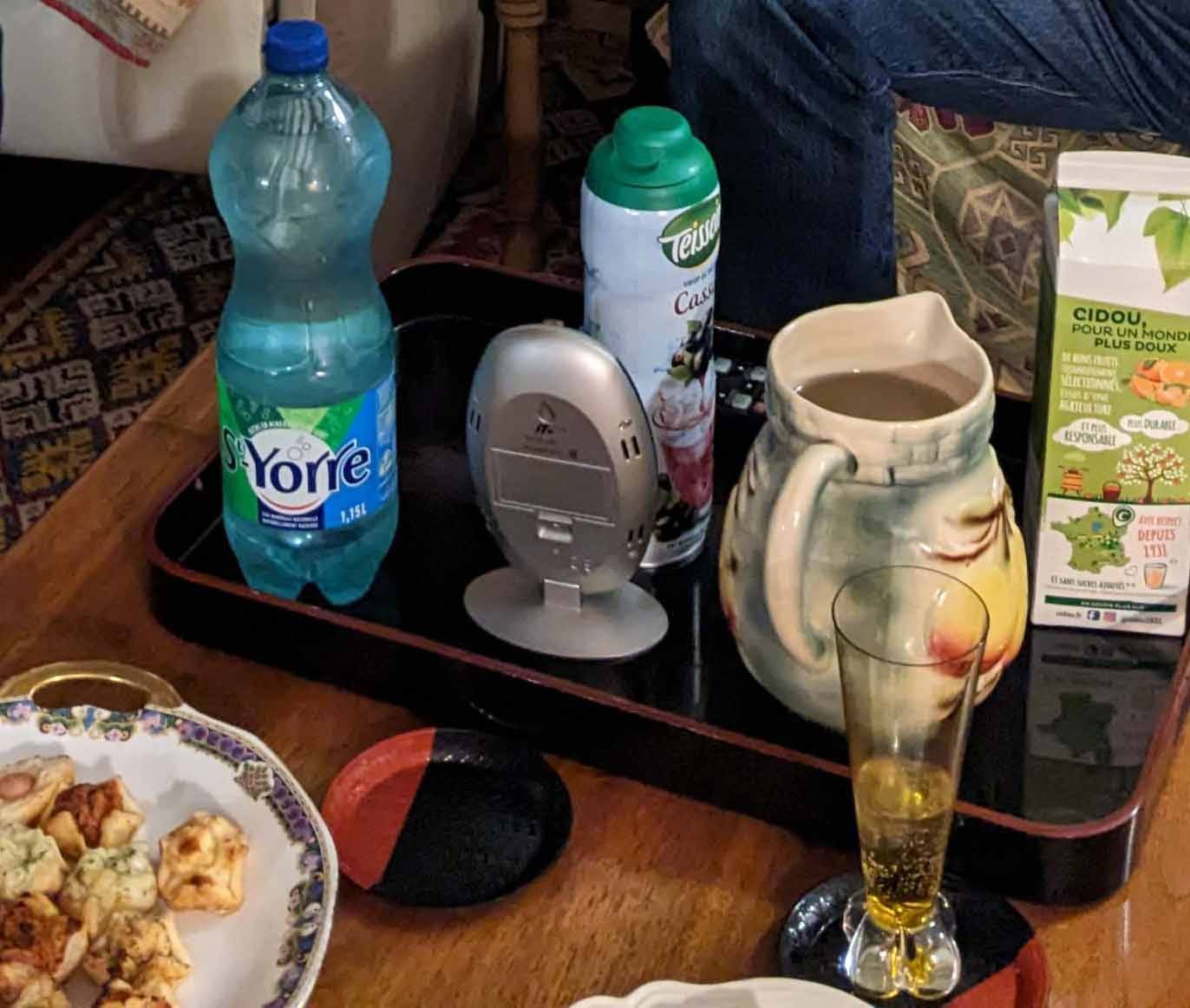
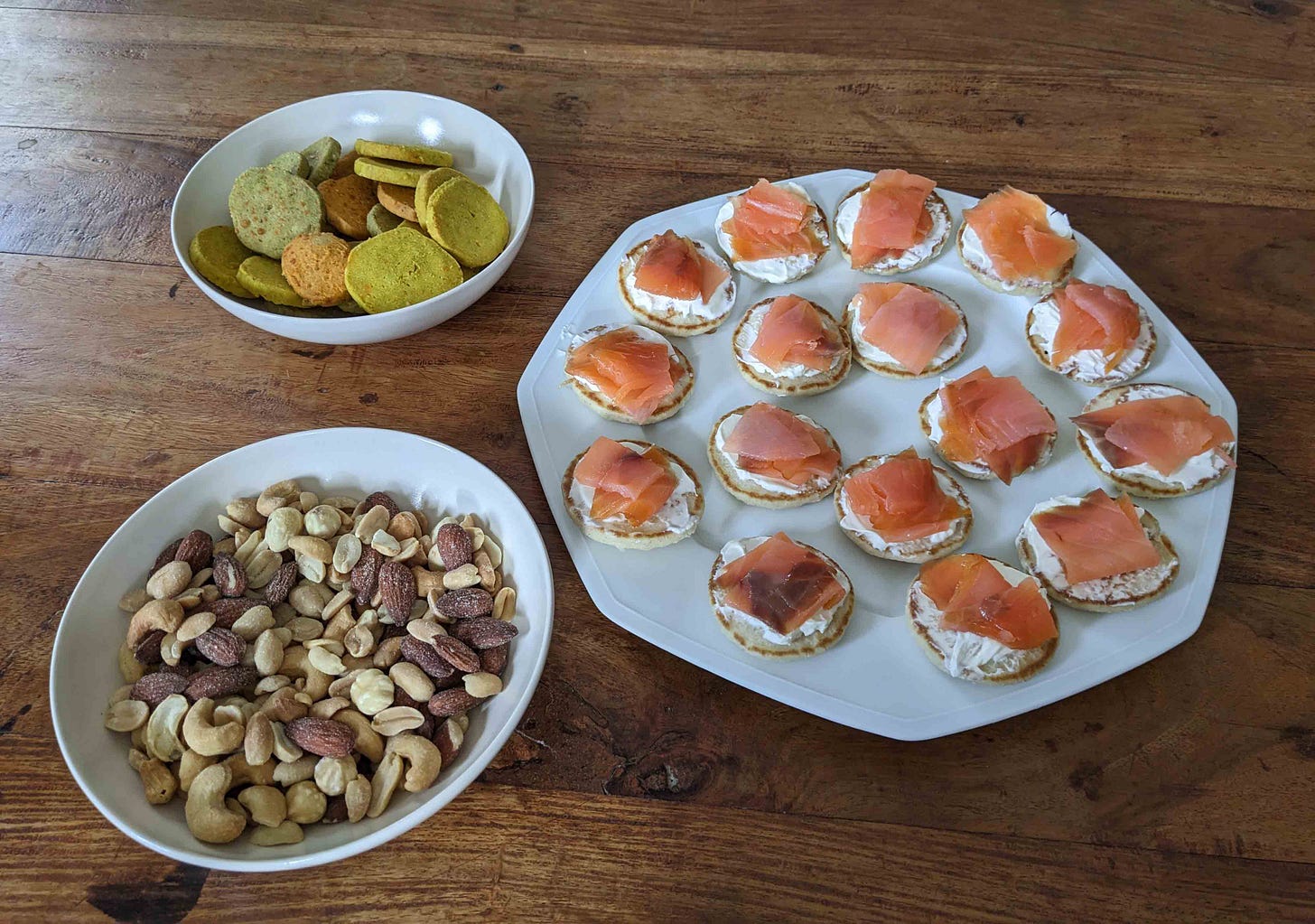
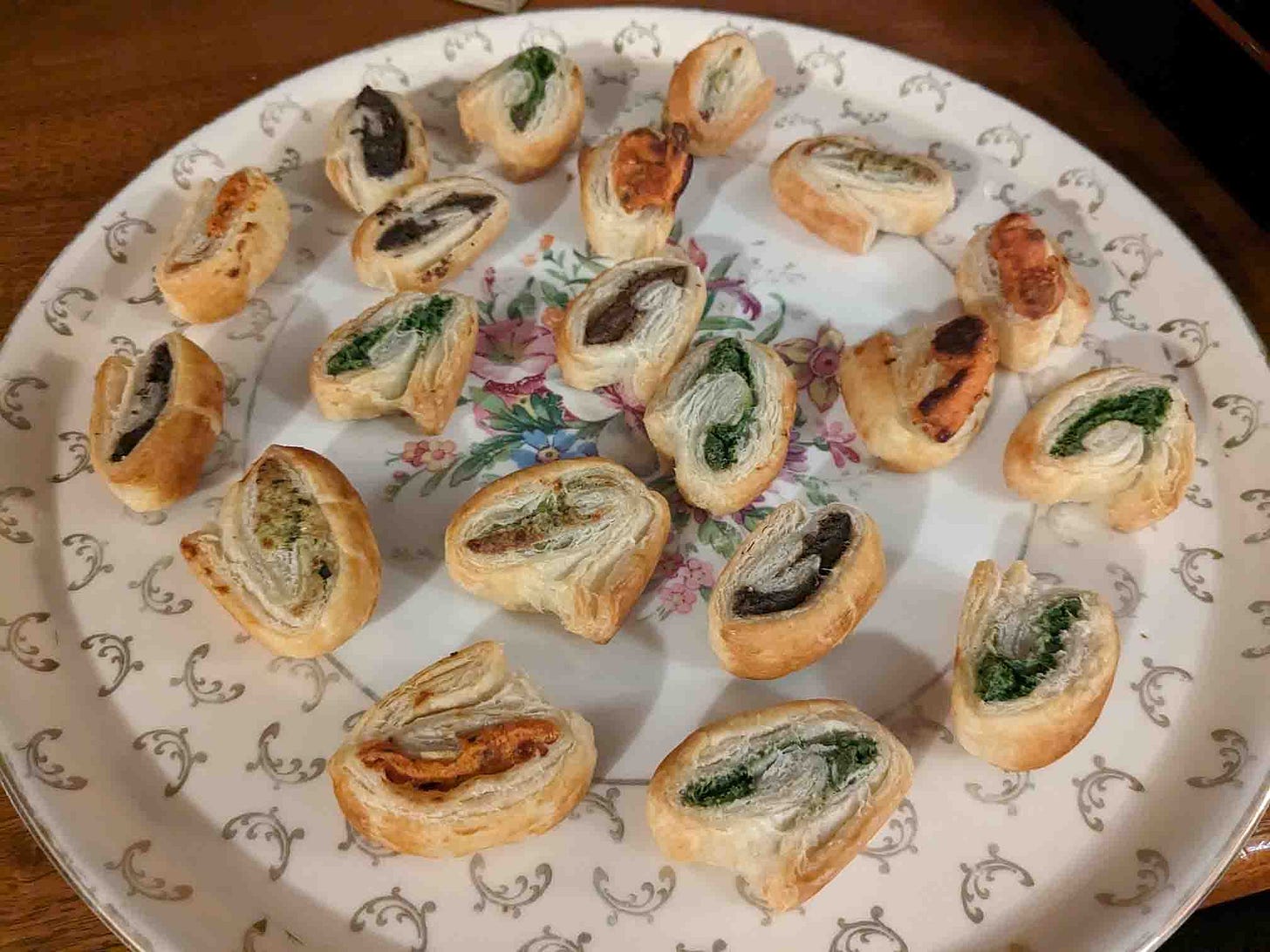
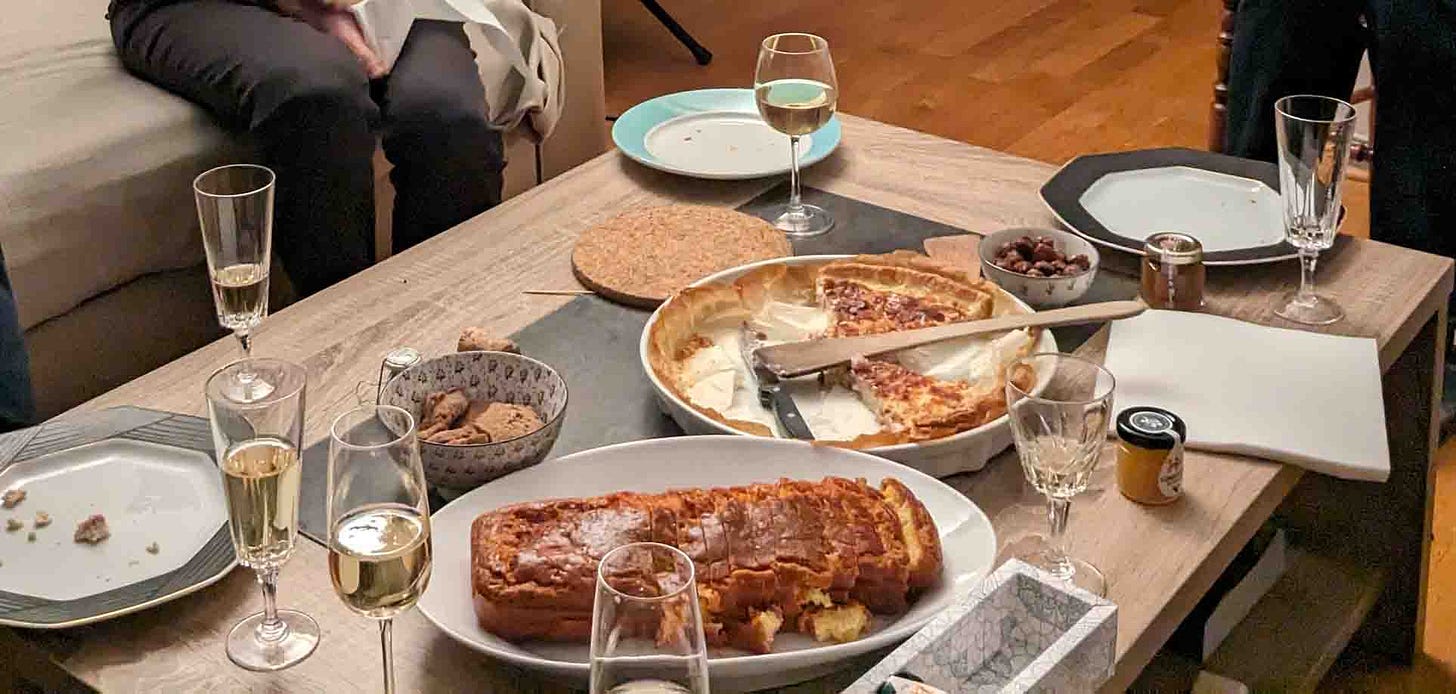
I love your description. In my time in France over the years, I’ve gotten familiar with apero culture. However I was with my children in France many years ago when I was struck by how different meals are compared to ours in the US. My kids were between the ages of 4 and 11 at the time. We were at a friend’s house in Paris for dinner and having apero. My kids were hungry and gobbled up the snacks. As is normal, the snacks were light but they were hungry American kids. Our hosts sent someone out to the store to get more. I tried to stop them, knowing my kids would keep eating and then not be hungry for the actual meal. I realized later that I hadn’t prepared them properly for the structure and schedule of a typical French meal. Lessons learned!